E-Bike Safety for Seniors
Introduction to E-bikes
E-bikes, or electric bicycles, have revolutionized the way we think about cycling. Combining traditional pedal power with an electric motor, these innovative bikes offer a boost when needed, making cycling more accessible and less strenuous. This is especially beneficial for seniors, who may find traditional biking challenging due to physical limitations.
As we delve into the world of E-bikes, it’s crucial to understand their mechanics, benefits, and, most importantly, how to ride them safely. This article aims to equip senior riders with essential knowledge and tips to enjoy the freedom of E-biking while prioritizing safety.
Benefits of E-bikes for Seniors
For seniors, E-bikes open a world of opportunities. They reduce the physical strain associated with traditional cycling, allowing older adults to enjoy longer rides without excessive fatigue. This can have a significant positive impact on physical health, improving cardiovascular fitness and joint mobility.
Additionally, E-biking can enhance mental well-being by providing a sense of independence and an opportunity to connect with nature and the community. The electric assist feature is particularly beneficial, as it can be adjusted to individual fitness levels, ensuring a comfortable and enjoyable riding experience. By combining exercise, outdoor activities, and social interaction, E-bikes offer a holistic approach to healthy aging.
Learn more about electric bikes
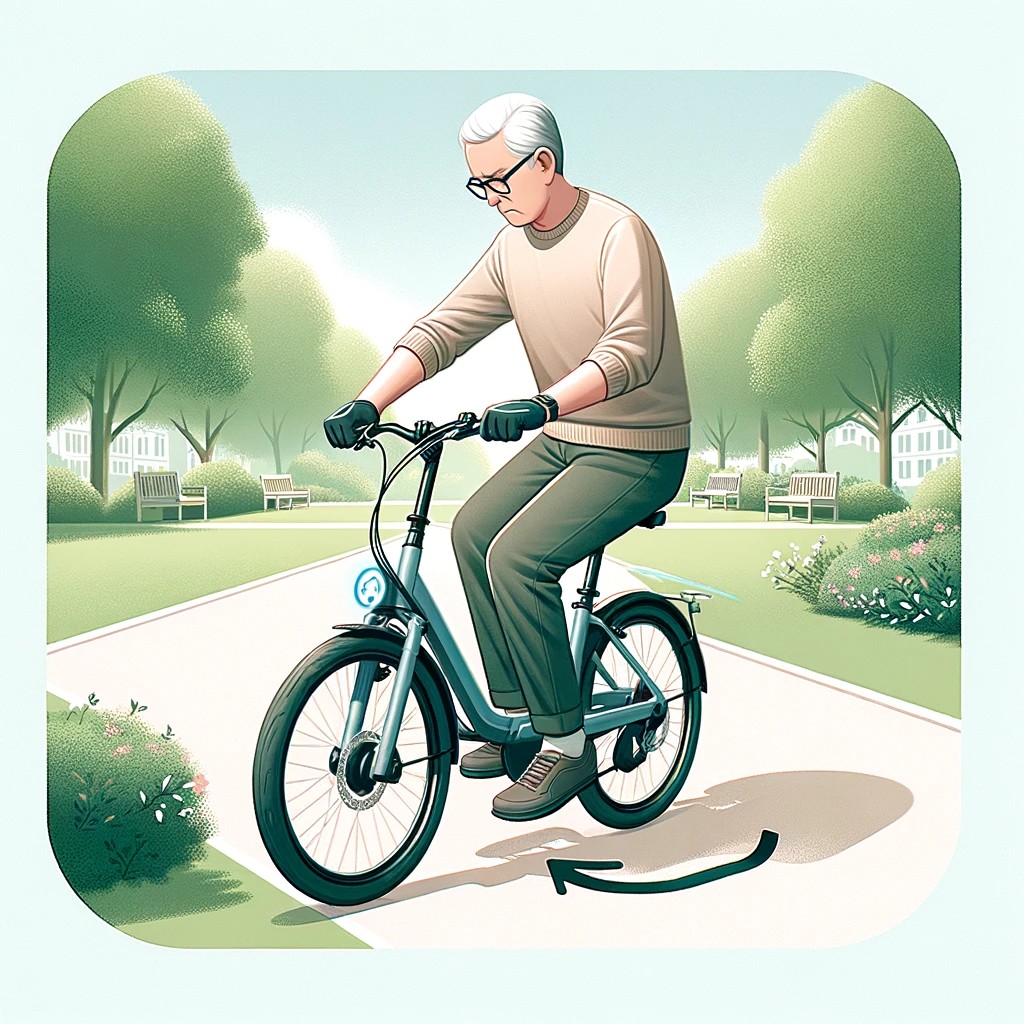
The Rise in Popularity of E-bikes Among Seniors
E-bikes are gaining immense popularity among seniors, and for good reason. Recent surveys indicate a growing trend in E-bike usage in the older demographic, attributed to their ease of use and health benefits. Seniors are increasingly recognizing E-bikes as a practical solution for maintaining mobility and independence.
The ability to cover longer distances without overexerting themselves makes E-bikes an attractive option for leisure, exercise, and even running errands. This surge in popularity is not just a fad; it’s a reflection of the desire among seniors to stay active, engaged, and independent. The E-bike’s adaptability to different fitness levels and its potential to cater to various physical capabilities make it a game-changer in senior mobility and lifestyle.
Common Concerns about E-bike Safety for Seniors
Safety is a paramount concern for senior E-bike riders. The most common worries involve the risk of accidents, which can be higher due to factors like slower reaction times and balance issues associated with aging. Concerns about navigating traffic, especially in busy urban areas, also loom large.
Additionally, the health implications of a fall or collision are more serious for older adults. Understanding these risks is the first step in mitigating them. This involves choosing the right E-bike, wearing appropriate safety gear, and learning safe riding practices. It’s essential for seniors to be aware of these concerns and take proactive steps to ensure their safety while enjoying the benefits of E-biking.
Choosing the Right E-bike for Seniors
Selecting the appropriate E-bike is crucial for seniors. Key factors to consider include the weight and height of the bike, ensuring it’s manageable. A step-through frame is often recommended for easier mounting and dismounting. The type of electric assist – whether pedal-assist or throttle – plays a significant role in the riding experience. Pedal-assist models, which provide power only when pedaling, can offer a more controlled and natural biking experience.
It’s also important to consider the bike’s stability, with three-wheeled options offering additional support. Seniors should look for E-bikes with comfortable seating and an adjustable handlebar to maintain an upright riding posture, reducing strain on the back and neck. Test riding different models can help in making an informed decision.
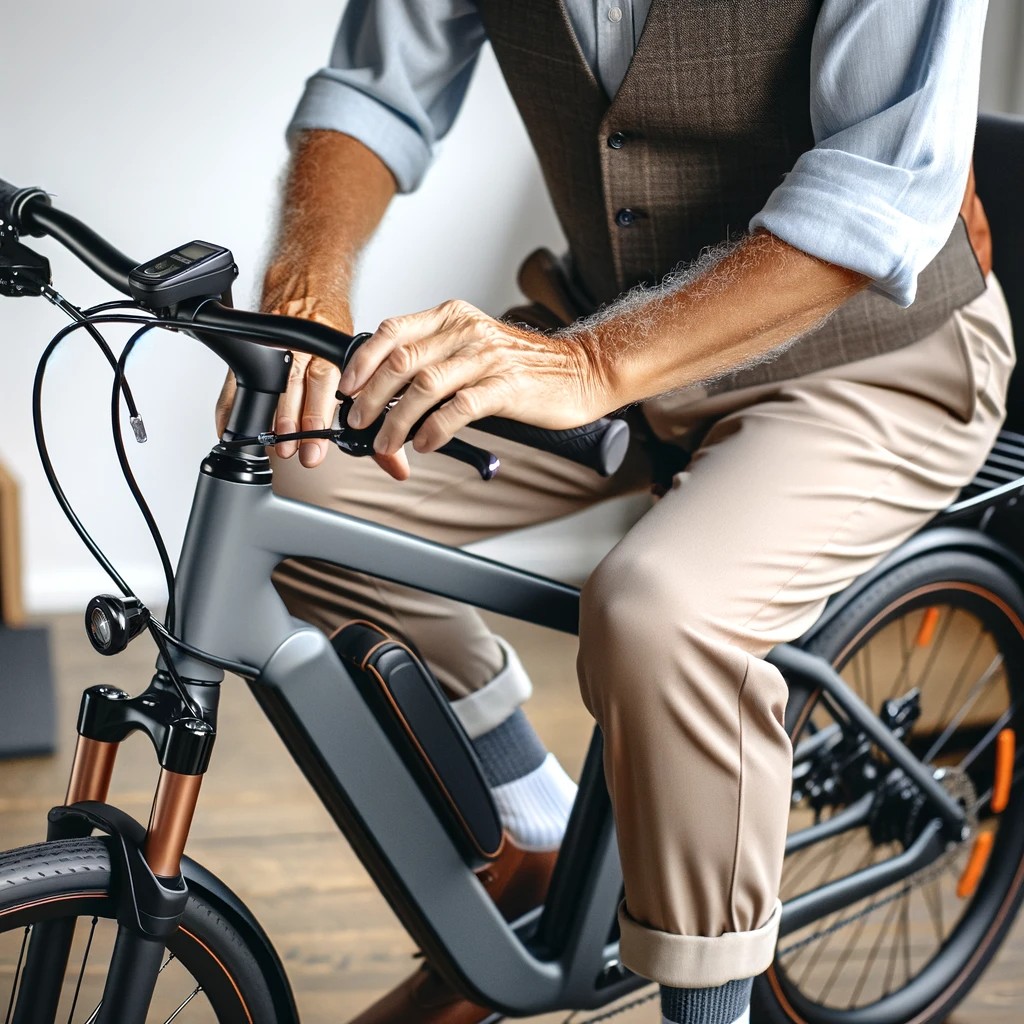
Understanding the Different Types of E-bikes
E-bikes come in various types, each suited to different riding needs and preferences. The primary categories include pedal-assist, where the motor only kicks in when you pedal, and throttle-controlled, which can propel the bike without pedaling. Within these categories, there are specialized types like hybrid, mountain, and road E-bikes.
Hybrids are versatile, suitable for both city riding and light off-road conditions. Mountain E-bikes are designed for rough terrain, offering robust construction and enhanced suspension. Road E-bikes are lightweight and streamlined, ideal for smooth, paved surfaces. For seniors, the choice depends on where and how they plan to use the E-bike. Those looking for leisurely rides around the neighborhood or city might prefer a hybrid or pedal-assist model for their versatility and ease of use.
Importance of Proper Safety Gear for E-bike Riders
For seniors riding E-bikes, investing in proper safety gear is essential. The most crucial piece of equipment is a well-fitted helmet, which significantly reduces the risk of head injuries in case of a fall or collision. Alongside helmets, wearing gloves can provide better grip and protect hands during a fall.
Elbow and knee pads offer additional protection, especially for those concerned about balance. Reflective clothing and lights are vital for visibility, particularly for those who ride in the early morning or evening. Eye protection, like sunglasses or clear lenses, guards against dust and debris. Seniors should also consider wearing comfortable, non-slip shoes for better control over the bike. While this gear is important for riders of all ages, it’s particularly critical for older adults due to their increased vulnerability to injuries.
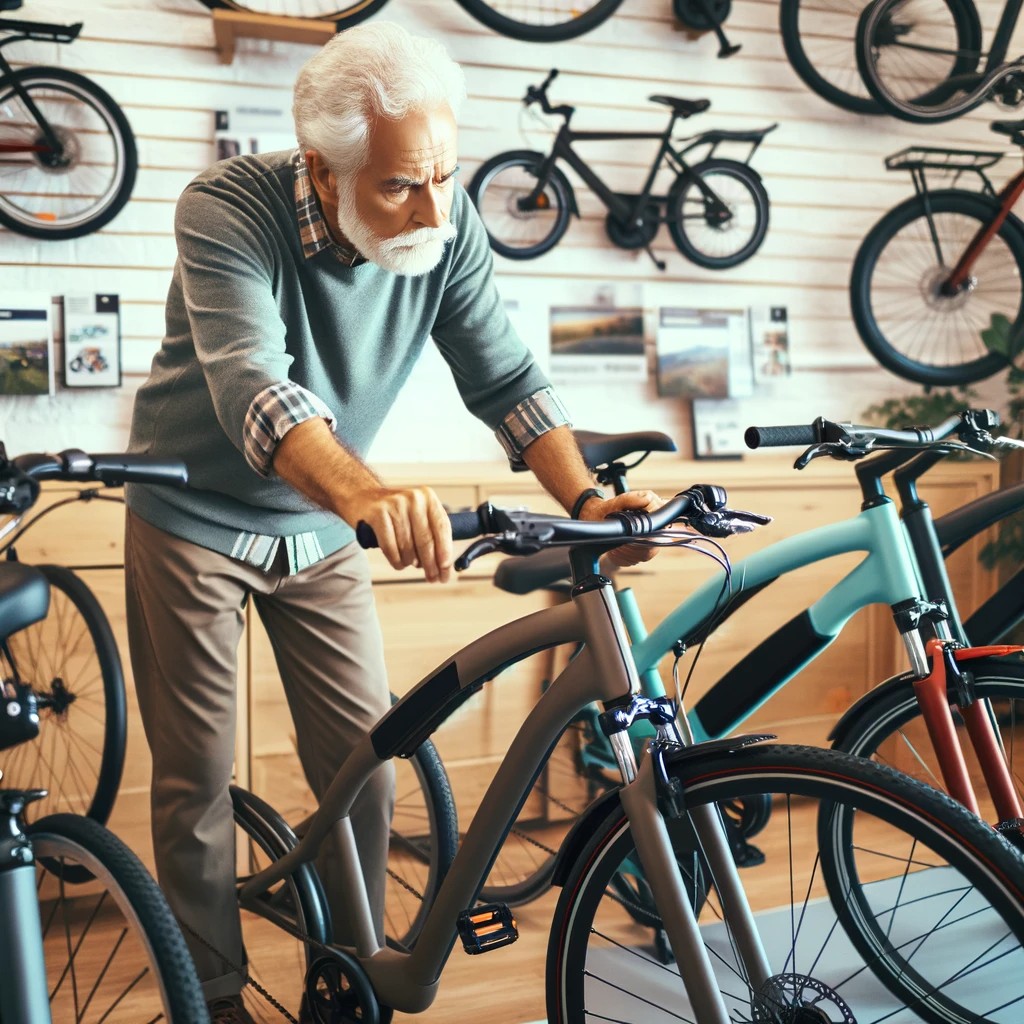
Basic Riding Techniques for Seniors
Mastering basic riding techniques is key to ensuring safety on an E-bike, especially for seniors. Starting with getting on and off the bike, it’s important to do so slowly and carefully, preferably using a bike with a low step-through frame for easier access. When beginning to ride, start with the lowest assist mode to get a feel for the bike’s speed and handling.
Practice braking gently but firmly to understand the stopping distance and avoid abrupt stops that could lead to loss of balance. Maintaining an upright posture helps in balancing and reduces strain on the back. Turning requires looking in the direction of the turn, signaling, and slowing down before making the turn. Regular practice in a safe, traffic-free area can build confidence and improve riding skills over time.
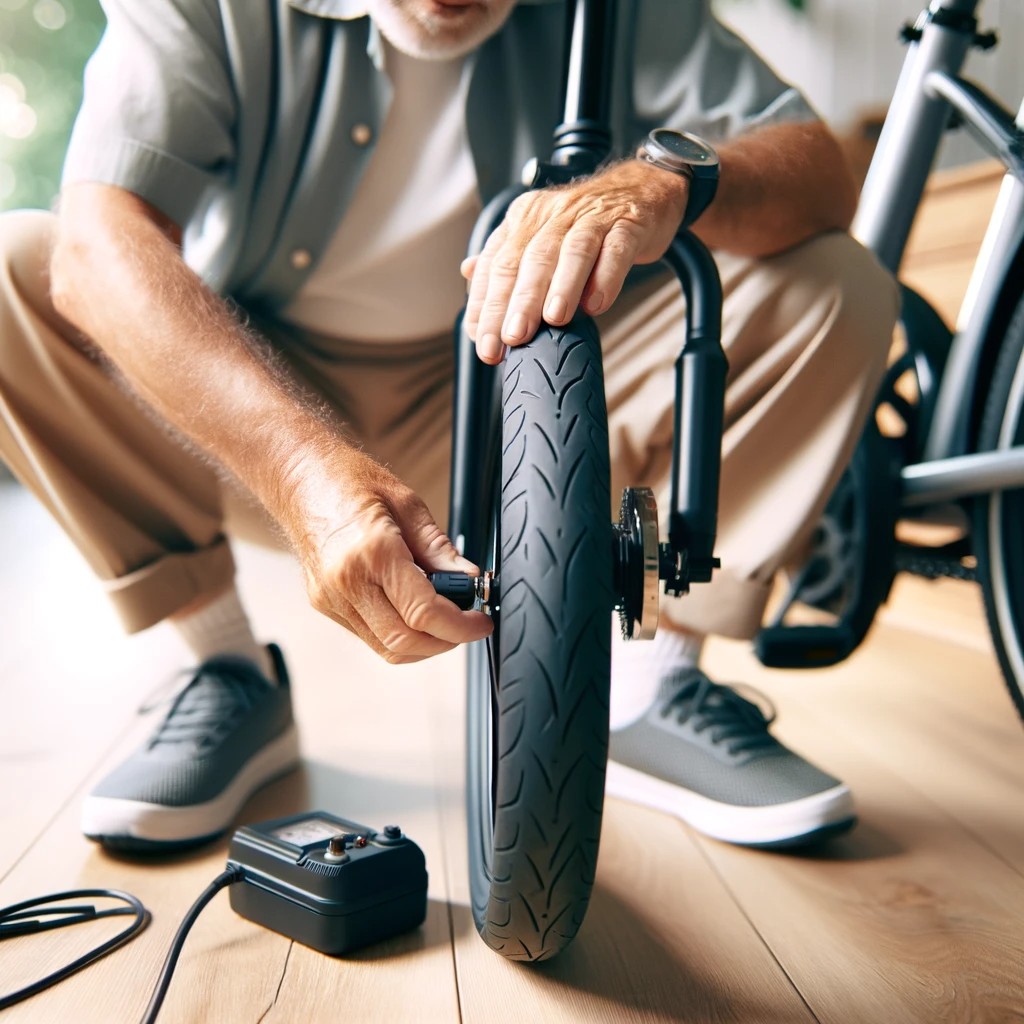
E-bike Maintenance and Safety Checks
Regular maintenance and pre-ride safety checks are crucial for E-bike safety, particularly for senior riders. Start with checking the tire pressure, ensuring they are inflated to the recommended level for a smooth and safe ride. Inspect the brakes to confirm they are responsive and not worn out.
The battery should be charged adequately and securely attached to the bike. Check the chain and gears for any signs of wear or damage, and ensure they are well-lubricated. The lights and reflectors need to be in good working condition for visibility purposes. It’s advisable for seniors to have their E-bikes serviced regularly at a professional bike shop to ensure all components are in optimal condition. These maintenance checks not only prolong the life of the E-bike but also play a significant role in preventing accidents.

Navigating Traffic and Sharing the Road with Other Vehicles
Navigating traffic safely is a vital skill for senior E-bike riders. Awareness is key when sharing the road with larger vehicles like cars and trucks. Always assume that drivers may not see you; therefore, make eye contact with drivers at intersections to ensure you’re noticed. Riding predictably, without sudden turns or stops, helps vehicles anticipate your movements.
Use hand signals to communicate your intentions to drivers, pedestrians, and other cyclists. Stay out of vehicles’ blind spots, especially large trucks and buses, to remain visible. It’s advisable to avoid busy roads during peak hours when traffic is heaviest. If possible, plan routes through quieter streets or dedicated bike paths. Remember, being cautious and courteous goes a long way in ensuring a safe and enjoyable ride in traffic.
E-bike Safety Tips for Riding in Different Weather Conditions
Riding an E-bike in varying weather conditions requires special considerations for safety. In rainy conditions, wear waterproof clothing and use fenders to prevent water from splashing. Roads can be slippery when wet, so reduce speed and increase stopping distances. In windy conditions, be prepared for sudden gusts, especially when riding near large buildings or open spaces.
During extreme temperatures, dress appropriately to avoid overheating or getting too cold. In hot weather, wear light, breathable clothing and sunscreen, and in cold weather, dress in layers to stay warm. Always carry water to stay hydrated. For snowy or icy conditions, avoid riding if possible. If necessary, use tires with better grip and go slow to avoid skidding. Above all, if the weather conditions seem too challenging, it’s safest to postpone your ride.
Importance of Staying Visible While Riding an E-bike
Visibility is a crucial factor for E-bike safety, especially for seniors. To ensure you are seen by other road users, always use lights – both front and rear – even during the day. LED lights are recommended for their brightness and long battery life. Reflective clothing and accessories like vests, jackets, and strips on helmets and shoes can significantly increase visibility.
Consider adding reflective tape to the E-bike itself. In addition to lights and reflective gear, choosing brightly colored clothing can help make you more noticeable. When riding, position yourself in the line of sight of drivers, avoiding blind spots. Being visible is not just about being seen; it’s about ensuring you’re safely acknowledged by those sharing the road with you.
Potential Hazards to Watch Out for While on an E-bike
Riding an E-bike involves being vigilant about various potential hazards. One common danger is road surface conditions like potholes, cracks, or uneven pavement, which can cause a loss of control. Be especially cautious on wet or icy roads, as these can be slippery. Watch out for obstacles such as rocks, branches, or debris.
Be aware of pedestrians, particularly in crowded areas, and always give them the right of way. Another hazard is animals, both wild and domesticated, which can unexpectedly cross your path. When riding near parked cars, be mindful of doors opening suddenly. It’s important to maintain a safe speed and keep a keen eye on your surroundings to react promptly to any potential dangers.
Tips for Riding on Different Terrains
Different terrains present unique challenges for E-bike riders. When riding in urban environments, navigate smoothly around traffic, pedestrians, and urban obstacles like curbs and streetcar tracks. On rural or less maintained roads, be prepared for uneven surfaces and loose materials like gravel.
Riding on trails or unpaved roads requires attention to potential obstacles like rocks, roots, and mud. Adjust your riding speed and technique according to the terrain. On smoother surfaces, you can maintain a steady pace, while on rougher terrains, it’s essential to slow down and maneuver carefully. Always keep both hands on the handlebars and be ready to brake when needed. Choosing the right type of E-bike for the terrain you plan to ride on most frequently can enhance your riding experience and safety.
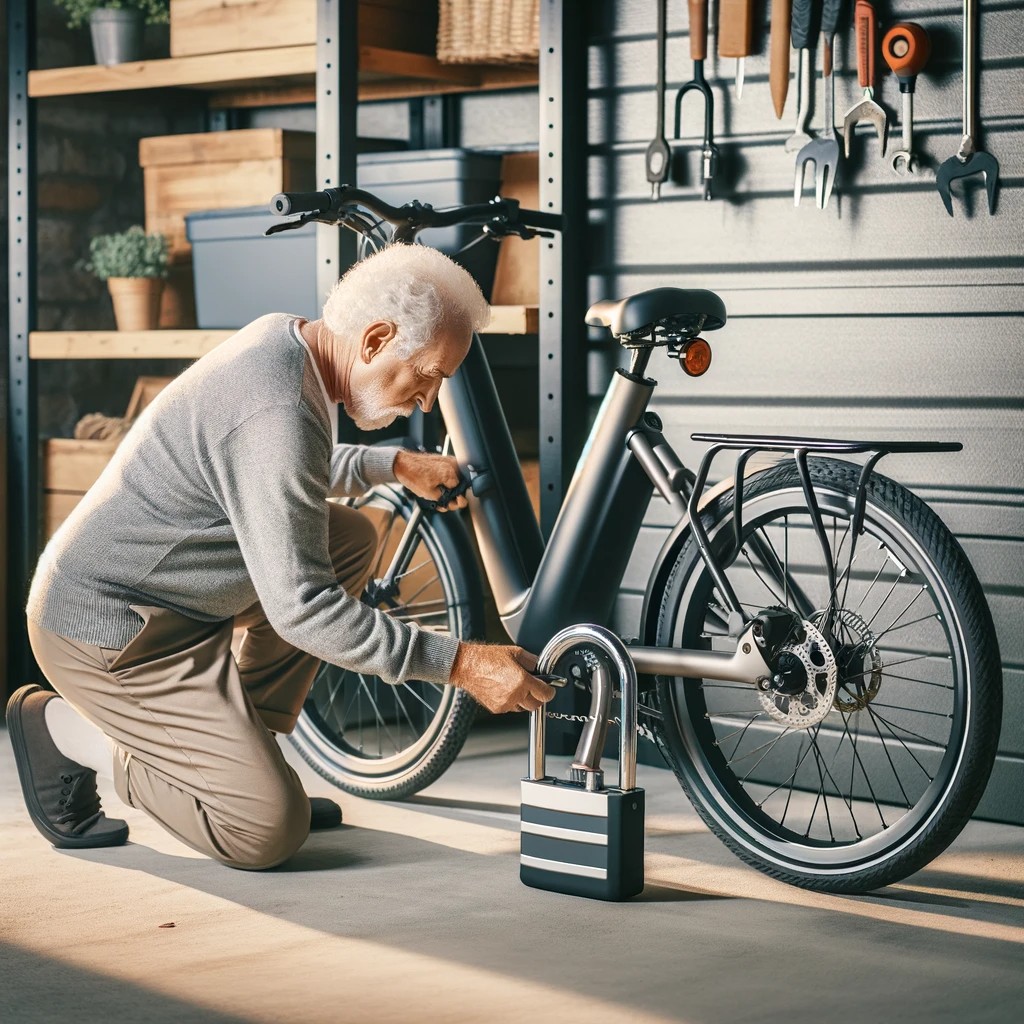
Properly Storing and Securing Your E-bike
Proper storage and security are essential for E-bike owners, especially seniors. When not in use, store your E-bike in a secure, dry place to protect it from weather damage and theft. A locked garage or shed is ideal. For those living in apartments, consider space-saving solutions like wall mounts. Always use a high-quality lock, even when storing the bike in a seemingly safe area. U-locks or heavy-duty chain locks are recommended.
When parking your E-bike in public, choose well-lit, busy areas. Lock the frame and wheels to a fixed object and never leave accessories like helmets or bags unattended. Additionally, consider registering your E-bike with local authorities or a bike registry to help recover it in case of theft. Proper storage and security measures not only protect your investment but also provide peace of mind.
How to Handle Accidents and Emergencies While Riding an E-bike
Accidents and emergencies can occur, even with cautious riding. If you’re involved in an accident, assess yourself for injuries first and seek medical attention if needed, even for minor injuries. If you’re able to move safely, move yourself and your E-bike out of the way of traffic. Exchange information with any other parties involved and take photos of the scene for insurance purposes.
In case of minor falls or issues, carrying a basic first aid kit can be helpful. For emergencies, such as a sudden health issue or bike malfunction, it’s important to have a plan. Carry a mobile phone and emergency contacts with you. Consider riding with a partner or in groups for added safety. Knowing how to handle these situations can reduce panic and ensure appropriate actions are taken promptly.
Importance of Regular Health Check-Ups for Seniors Who Ride E-bikes
For seniors engaging in E-biking, regular health check-ups are crucial. These check-ups can monitor your fitness for cycling, especially heart health, joint flexibility, and overall physical condition. Discuss your E-biking activities with your healthcare provider to receive personalized advice, taking into account any existing health conditions. They might suggest specific exercises to improve strength and balance, which are important for safe E-bike riding.
Regular vision and hearing tests are also important, as these senses are vital for safely navigating traffic and being aware of your surroundings. Additionally, if you’re taking medications, discuss potential side effects, like dizziness or drowsiness, which could affect your riding. Staying on top of your health not only ensures a safer riding experience but also enhances your overall well-being.
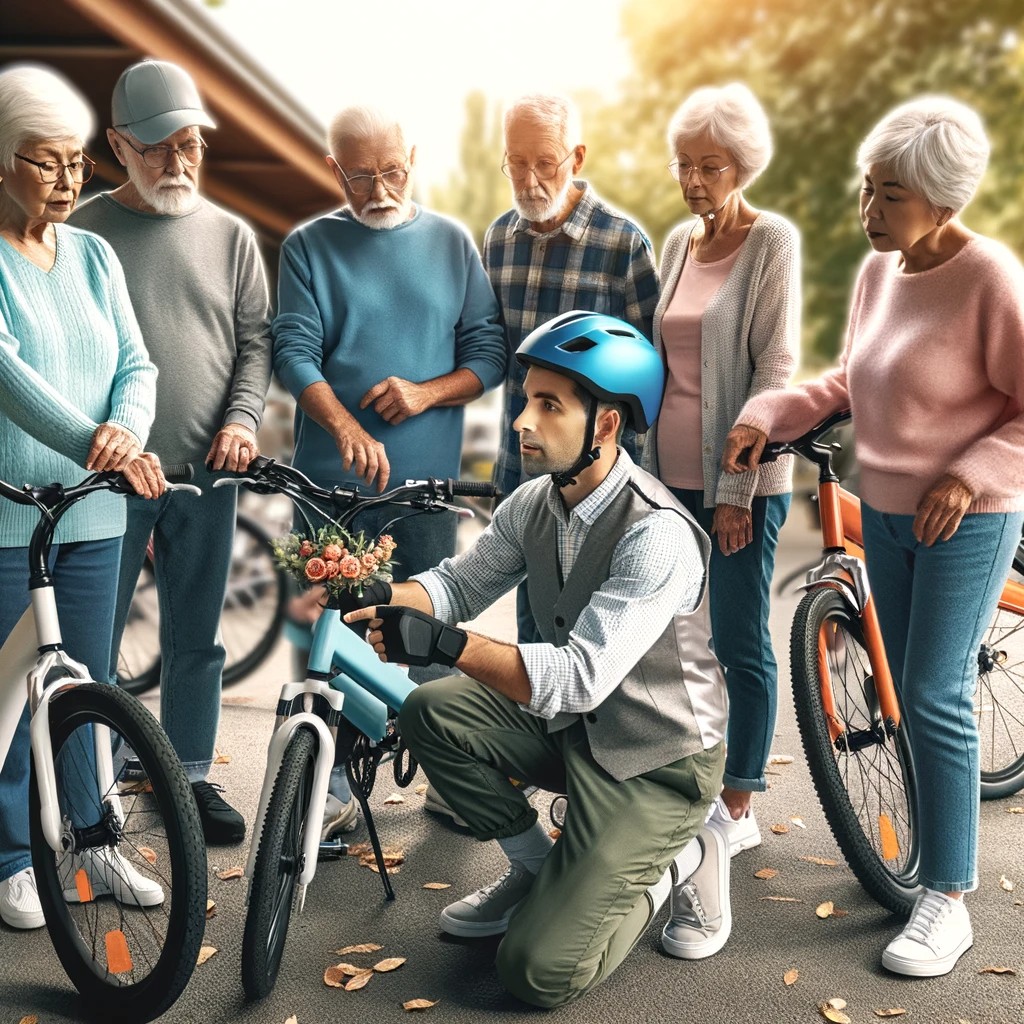
Promoting Safe E-bike Riding in Your Community
Promoting E-bike safety in the senior community is not just an individual responsibility; it’s a collective effort. One effective way is through community workshops and safety courses, which can educate seniors about the nuances of E-bike riding. Local cycling clubs or senior centers might organize such events. Participating in or even leading group rides can also encourage safe practices while fostering a sense of community.
Additionally, advocating for better cycling infrastructure, like bike lanes and parking, can significantly enhance safety for all riders. Seniors can also play a crucial role by sharing their knowledge and experiences with peers, encouraging more seniors to take up E-biking confidently and safely. By actively engaging in these initiatives, seniors can help create a safer, more inclusive environment for E-bike enthusiasts in their community.
Conclusion: Enjoying the Freedom of E-bike Riding While Staying Safe as a Senior
In conclusion, E-biking offers seniors a wonderful blend of freedom, fitness, and fun. It’s a way to stay active, explore the outdoors, and maintain independence. However, this enjoyable experience comes with the responsibility of prioritizing safety. By choosing the right E-bike, wearing appropriate safety gear, and practicing safe riding techniques, seniors can significantly reduce the risks involved.
Regular maintenance of the E-bike and staying vigilant about potential hazards are also key. Remember, safety is not just about protecting oneself; it’s about contributing to a safer environment for everyone on the road. E-biking as a senior doesn’t have to be daunting. With the right precautions and a proactive approach to safety, it can be a fulfilling and joyous activity. Embrace the journey, stay safe, and enjoy the ride!
FAQs on E-Bike Safety for Seniors
Q1: What are the main safety concerns for seniors when riding an E-bike?
A1: The primary safety concerns include balancing issues, navigating traffic safely, and the risk of falls or collisions. Seniors should also be aware of their physical limitations and the impact of any health conditions on their ability to ride safely.
Q2: How can seniors choose the right E-bike for their needs?
A2: Seniors should consider E-bikes with a step-through frame for easy access, adjustable handlebars for a comfortable riding position, and a suitable electric assist level. Test riding different models and consulting with E-bike experts can aid in making an informed decision.
Q3: Are there specific safety gear items that seniors should use while E-biking?
A3: Yes, seniors should wear a well-fitted helmet, gloves, and if desired, elbow and knee pads. Reflective clothing and lights are essential for visibility, especially during early morning or evening rides.
Q4: What maintenance checks are important for E-bike safety?
A4: Regular maintenance checks should include inspecting tire pressure, brakes, battery, chain, gears, lights, and reflectors. Routine servicing by a professional is also recommended to ensure all parts are functioning correctly.
Q5: Can E-biking be beneficial for the physical and mental health of seniors?
A5: Absolutely! E-biking can improve cardiovascular fitness, enhance joint mobility, and provide mental health benefits through outdoor activity and increased social interaction. It’s a low-impact exercise that can be adjusted to individual fitness levels.

